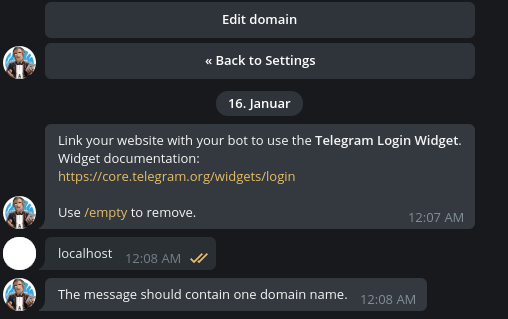passport-telegram-widget
Passport strategy for Telegram login widget authentication.
Install
npm i passport-telegram-widgetSetup
Bot
You need a Telegram bot for the login widget to work. Please follow their official instructions on how to set up the bot and generate the <script> tag on https://core.telegram.org/widgets/login
Usage
Locally
For the bot to send user data to your site (data-auth-url), you have to enable your domain. This doesn't work with localhost.
Luckily, we have /etc/hosts, which we can use to make browsers believe that they are talking to a domain; e.g. my-app.me.
Windows users will find the hosts file at C:\Windows\System32\drivers\etc\hosts
Open /etc/hosts with an editor (root privileges required!) and add my-app.me to the line starting with 127.0.0.1
127.0.0.1 localhost my-app.me
Now change the generated markup, setting data-auth-url
<script
async
src="https://telegram.org/js/telegram-widget.js?15"
data-telegram-login="my_app_me_bot"
data-size="large"
data-auth-url="http://my-app.me/tg-auth">
</script>The path tg-auth is from the demo implementation to this strategy. You will want to adjust that for yours.
Go back to the @botfather and /setdomain on your bot
Now you can spin up your server and log in via http://my-app.me/, using the widget.
P.S. This hosts trick works great for all sorts of other domain-related headaches, like CORS and SSL


